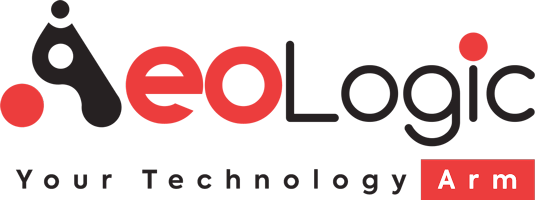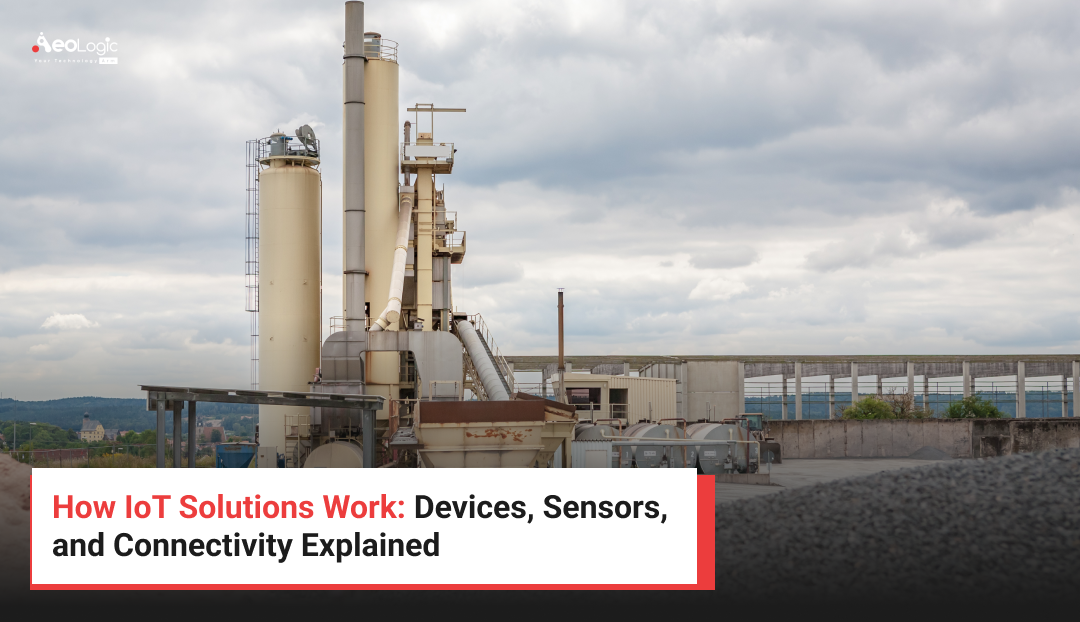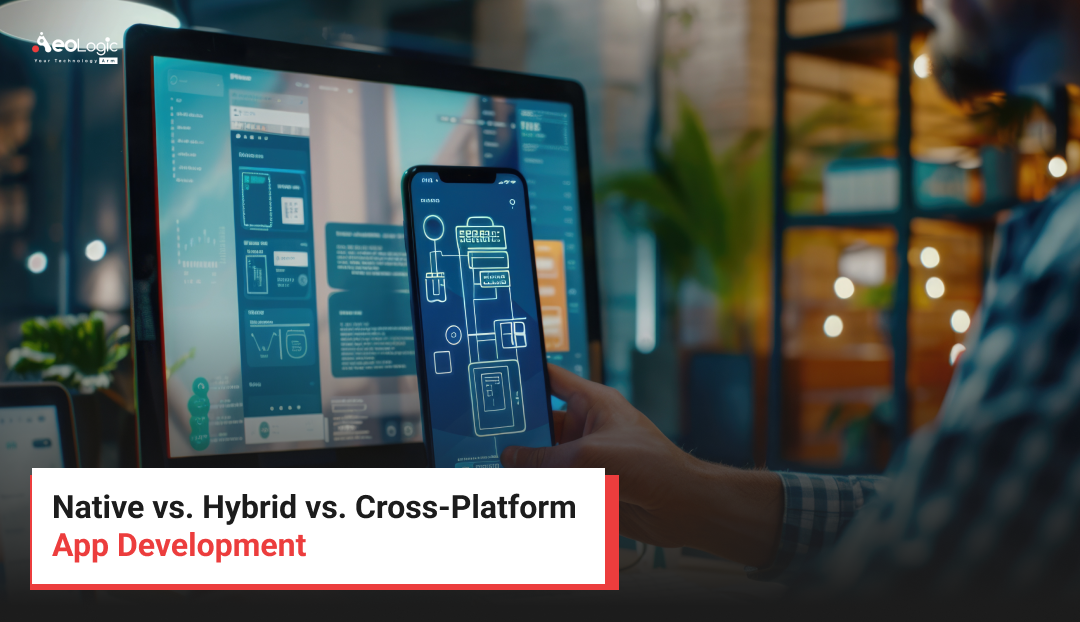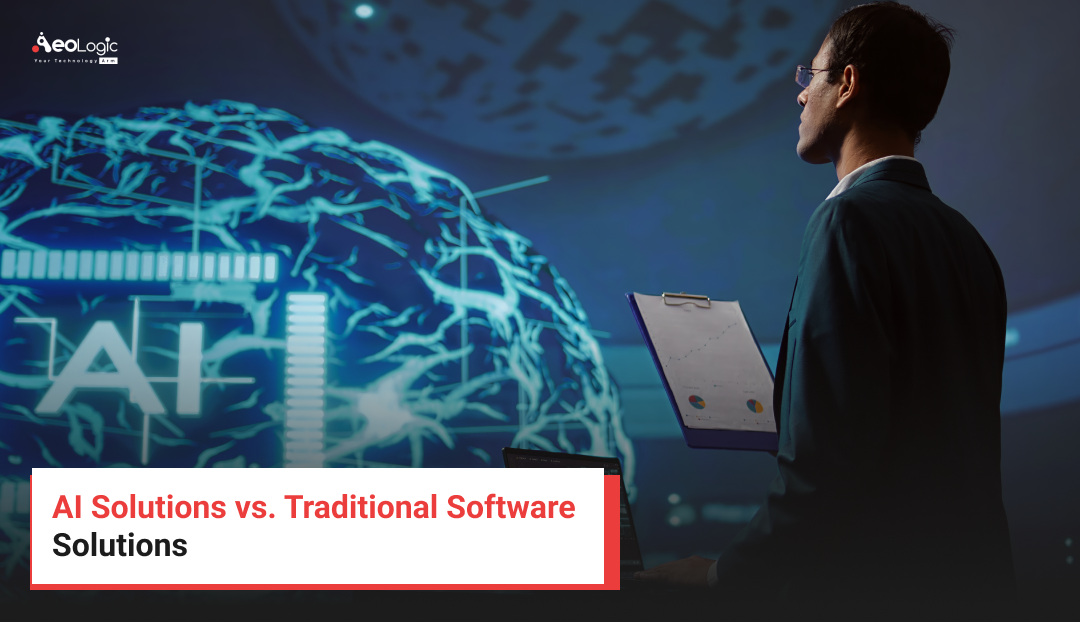The Internet of Things (IoT) is not just another buzzword. It is one of the most impactful technologies reshaping how people, businesses, and machines interact. In simple terms, IoT connects physical objects to the internet, enabling them to collect and share data. These objects could be anything from industrial machines and wearable gadgets to smart home appliances and medical equipment. To understand how IoT solutions work, we must look deeper into how devices, sensors, and connectivity form an ecosystem that communicates and operates without constant human intervention. When these elements come together, they create intelligent systems capable of monitoring, analyzing, and even acting on data.
IoT solutions make industries smarter, improve resource management, and help businesses make more accurate, data-driven decisions. Whether it is a car transmitting its maintenance data, a factory machine alerting engineers before a fault, or a home security camera streaming real-time footage, IoT is everywhere.
The Market Growth of IoT
The global IoT market has been expanding rapidly due to the rising need for automation, smart infrastructure, and connected systems. Businesses today want more than just devices — they want intelligent solutions that offer insights and improve performance.
According to research reports, the Internet of Things market is expected to grow from USD 650 billion in 2024 to around USD 1.7 trillion by 2032, with a CAGR of nearly 12.5%. The growth is being fueled by rapid digital transformation across industries, increased demand for smart devices, and the rise of advanced connectivity options such as 5G.
In industrial sectors, Industrial IoT (IIoT) is playing a major role. Factories are connecting machines, robots, and sensors to monitor production efficiency, detect issues, and optimize energy use. The same trend is visible in logistics, where IoT enables fleet tracking, predictive maintenance, and real-time route optimization.
Agriculture, healthcare, retail, and transportation are also adopting IoT systems to enhance operations. For instance, smart agriculture systems use IoT sensors to monitor soil, temperature, and crop health. Healthcare providers use wearable devices to monitor patient conditions remotely.
The global demand for data-driven automation has made IoT one of the most promising technologies for the coming decade.
How IoT Solutions Work: Devices, Sensors, and Connectivity
To truly understand how IoT solutions work, we need to break down the process into three essential components: devices, sensors, and connectivity. These form the foundation of every IoT system.
-
Devices — These are the “things” in IoT. They can be anything from wearable fitness bands to large industrial machines. Devices collect or receive information, execute commands, and communicate with other systems.
-
Sensors — Sensors capture physical data such as temperature, motion, pressure, or humidity. They are responsible for turning real-world activity into digital data that can be processed.
-
Connectivity — This is how devices and sensors communicate with each other or with the cloud. Connectivity options include Wi-Fi, Bluetooth, Zigbee, LoRaWAN, 4G, and 5G.
When these three components interact, they form an end-to-end IoT system. The process starts when sensors collect data from their surroundings. Devices either process this data locally or send it to cloud servers using connectivity channels. Once the data reaches the cloud, it is analyzed through algorithms and analytics tools.
The analyzed data is then sent back to the device or displayed on dashboards for users to make decisions. This continuous flow of data collection, transmission, and feedback defines how IoT systems operate in real-world environments.
The Role of IoT Devices in Connected Systems
IoT devices are at the heart of every connected ecosystem. They are the physical tools that sense, send, or act on data. Each device plays a different role depending on its design and purpose.
For example, a smart thermostat adjusts room temperature automatically by communicating with temperature sensors and cloud systems. A connected industrial robot uses embedded IoT technology to detect faults and alert technicians before a malfunction occurs.
IoT devices generally include three main elements:
-
Sensors or Actuators that collect or respond to data.
-
Microcontrollers or Processors that handle local computation.
-
Communication Modules that send and receive data over the network.
In consumer applications, IoT devices enhance convenience and control. Smart homes allow users to monitor energy consumption, manage lighting, or control appliances using mobile applications.
In business environments, devices streamline operations by reducing downtime and increasing productivity. In logistics, IoT devices help track shipments and monitor conditions such as temperature or humidity.
When devices are properly connected and integrated, they provide transparency, automation, and accuracy across the system. This is one of the main reasons why IoT technology continues to expand into nearly every sector.
The Function of Sensors in IoT Solutions
Sensors are the most critical components of IoT systems because they convert physical changes into measurable data. Without sensors, IoT would simply not exist.
Sensors can detect a wide range of parameters — from temperature and humidity to light intensity, motion, gas concentration, vibration, and proximity. Each sensor provides real-time input to help devices understand what’s happening around them.
In a smart factory, for instance, vibration sensors can detect irregular movements in machines that may indicate a mechanical issue. Agriculture, soil moisture sensors provide accurate data about irrigation needs. Healthcare, wearable sensors continuously track vital signs such as heart rate and oxygen levels.
Once the sensors collect this information, they pass it to the connected devices for further processing. The data can either be stored locally (edge processing) or transmitted to the cloud. This constant feedback loop allows for automation, predictive analytics, and faster decision-making.
Sensors are what make IoT intelligent — they allow machines to “see” and “feel” the world, creating the bridge between physical reality and digital intelligence.
How Connectivity Powers IoT Networks
Connectivity is what brings everything together in IoT. It enables communication between sensors, devices, gateways, and cloud platforms. Without strong and stable connectivity, IoT systems would fail to deliver accurate and timely results.
Different connectivity technologies are chosen depending on the use case:
-
Wi-Fi: Ideal for short-range and high-speed data transfers, such as smart home systems.
-
Bluetooth: Suitable for wearable devices or equipment that operates close together.
-
LoRaWAN: Used for long-range, low-power applications like agriculture and environmental monitoring.
-
Cellular (4G/5G): Essential for large-scale IoT deployments that require real-time data transmission and global coverage.
-
Ethernet and Zigbee: Often used in industrial environments for reliability and stability.
Connectivity not only moves data but also ensures synchronization across all devices. For example, in fleet management, vehicles use IoT modules connected via 4G or satellite networks to share real-time location and fuel data.
As technology advances, 5G connectivity is becoming the driving force behind faster, more efficient IoT systems. It enables low-latency communication, supports millions of connected devices, and opens the door to new applications such as autonomous vehicles and smart cities.
Connectivity determines how IoT solutions perform — the stronger and more reliable the connection, the more seamless and intelligent the system becomes.
Benefits of IoT Solutions Across Industries
IoT is transforming industries at an unprecedented pace. It offers benefits that range from operational efficiency to real-time insights. Here are some of the major advantages of IoT solutions.
1. Real-Time Monitoring
IoT enables businesses to track processes, equipment, and environments in real time. This improves visibility, enhances safety, and allows immediate response to changes.
2. Predictive Maintenance
IoT-powered systems can detect potential failures before they occur. In manufacturing or transportation, predictive maintenance reduces downtime and prevents costly disruptions.
3. Enhanced Decision Making
IoT data analytics provides deep insights that help businesses make better decisions. From resource allocation to production planning, IoT data adds intelligence to operations.
4. Cost Reduction
Automation and optimization lead to reduced waste and energy consumption. IoT-based energy monitoring systems can cut operational costs by up to 30%.
5. Improved Customer Experience
IoT helps personalize services. For example, connected devices can offer tailored recommendations or automatically adjust to user preferences.
6. Sustainability and Resource Efficiency
By monitoring usage patterns and reducing waste, IoT contributes to more sustainable business practices. Smart grids, smart farms, and intelligent energy systems are examples of eco-friendly IoT applications.
Across industries like manufacturing, healthcare, agriculture, and retail, the benefits of IoT continue to grow. The ability to connect, analyze, and act on data makes it an essential part of digital transformation strategies.
Cost to Implement IoT Solutions
Implementing IoT systems involves a mix of hardware, software, and network components. The total cost depends on the scale, complexity, and purpose of the deployment.
1. Device and Sensor Costs
Basic IoT sensors can cost as little as $5 each, while advanced ones for industrial use can range from $50 to $500 per unit. Devices with processing capabilities and communication modules add to the expense.
2. Connectivity Costs
The choice of connectivity also affects pricing. Wi-Fi and Bluetooth are generally low-cost, while cellular or satellite networks may require ongoing subscription fees.
3. Cloud Infrastructure and Data Management
Cloud platforms are essential for IoT data storage and analytics. Costs depend on the data volume and the chosen service provider.
4. Software Development and Integration
Developing custom IoT dashboards, analytics systems, or mobile apps can range from $20,000 to $100,000 or more, depending on complexity.
5. Maintenance and Security
IoT systems require ongoing monitoring, updates, and cybersecurity measures. These costs can add 10–20% annually to the total investment.
Overall, implementing IoT solutions may cost between $25,000 and $500,000, depending on scale and functionality. While the initial investment may seem high, the long-term savings and productivity improvements often justify the expense.
Future Trends in IoT Solutions
IoT is growing rapidly, and several new trends are shaping its future. These trends aim to make IoT faster, smarter, and more secure. Businesses across all sectors are adopting these advancements to gain a competitive edge and create sustainable growth.
1. Artificial Intelligence and Machine Learning Integration
AI and ML are becoming essential for making IoT systems more intelligent. Instead of only collecting and transmitting data, IoT devices can now analyze it on their own. This allows them to detect anomalies, predict future outcomes, and automate decisions.
For example, AI-enabled IoT sensors in manufacturing can forecast equipment failure and schedule maintenance automatically. This reduces downtime and improves operational efficiency. In smart cities, AI analyzes IoT data to optimize traffic flow and reduce congestion.
2. Edge Computing for Faster Processing
Traditional IoT systems rely heavily on cloud computing, which can sometimes cause delays in processing. Edge computing solves this by moving computation closer to the data source. Devices process information locally and only send relevant data to the cloud.
This reduces latency, enhances data privacy, and ensures faster responses. Industries such as healthcare, autonomous vehicles, and industrial automation are rapidly adopting edge computing to improve reliability and real-time performance.
3. Expansion of 5G Networks
5G connectivity is one of the most transformative trends driving the next generation of IoT. It enables higher data transfer speeds, minimal latency, and massive device connectivity. With 5G, IoT applications like autonomous transportation, remote surgery, and smart factories can function more efficiently.
The scalability and flexibility of 5G will allow billions of IoT devices to connect seamlessly. It will also create new business models based on real-time services and instant communication.
4. Blockchain for IoT Security and Transparency
As IoT networks expand, security and data integrity become top priorities. Blockchain technology offers a decentralized way to store and verify IoT data, ensuring that no unauthorized entity can manipulate or access sensitive information.
Blockchain can create immutable records of IoT transactions, improving transparency and trust in sectors such as supply chain management, energy distribution, and healthcare. Combined with IoT, blockchain can make systems more secure and traceable.
5. Sustainable and Green IoT
Sustainability is becoming a major focus in IoT development. New devices are being designed to consume less power and operate on renewable energy. Green IoT focuses on using connected technologies to monitor environmental impact and optimize energy consumption.
For instance, smart grids reduce power waste, while IoT-based agriculture minimizes water usage through intelligent irrigation. These innovations contribute to creating a more sustainable future.
6. Interoperability and Standardization
With the rapid growth of IoT devices, ensuring that they can communicate across different platforms is crucial. Industry players are now emphasizing interoperability standards that allow seamless data exchange between different systems and manufacturers.
This development will enable organizations to integrate multiple IoT devices without compatibility issues, improving scalability and simplifying operations.
7. Digital Twins Technology
Digital twins are virtual representations of physical assets, systems, or processes. Using IoT data, digital twins help simulate, analyze, and predict performance in real time.
Manufacturing, energy, and construction sectors use digital twins to monitor equipment health and predict potential issues before they occur. As IoT evolves, digital twins will become more advanced and widely used in managing complex systems.
8. IoT in Smart Cities
Smart cities rely on IoT to improve infrastructure, energy management, and citizen services. IoT sensors monitor traffic, air quality, waste management, and water usage to make cities more efficient and livable.
In the coming years, IoT will play a larger role in shaping urban development, providing cities with actionable insights to improve transportation, sustainability, and resource allocation.
Final Words
Understanding how IoT solutions work helps businesses and individuals realize how this technology connects devices, sensors, and connectivity into one intelligent ecosystem. IoT is not only about connecting things — it is about creating value through data, automation, and real-time insights.
From smart homes and hospitals to factories and cities, IoT is transforming how we live and work. Its ability to collect data, analyze it, and take action makes it a cornerstone of modern digital transformation. With advancements in AI, edge computing, and 5G, IoT will continue to evolve into more sophisticated and reliable systems.
Businesses that embrace IoT today can gain a clear competitive advantage through improved efficiency, better decision-making, and enhanced customer experiences.
So, if your organization wants to build smarter, more connected systems, this is the right time to adopt IoT.
Get in touch with our expert IT team at Aeologic Technologies today and explore how our innovative IoT solutions can help you connect, analyze, and optimize your business operations for the future.
FAQs
1. What is IoT, and how does it work?
IoT stands for the Internet of Things. It works by connecting physical devices equipped with sensors and software to the internet. These devices collect and exchange data, which can then be analyzed to automate actions or make better decisions.
2. What are the main components of IoT solutions?
The key components of IoT solutions are devices, sensors, and connectivity. Devices gather or use data, sensors detect changes in the environment, and connectivity enables communication between devices and cloud platforms.
3. Which industries benefit the most from IoT?
IoT benefits several industries, including manufacturing, healthcare, agriculture, logistics, energy, and retail. Each sector uses IoT for monitoring, automation, and improving overall performance.
4. What role does 5G play in IoT?
5G enhances IoT performance by offering faster data transfer speeds, low latency, and support for massive device connections. It enables applications like autonomous vehicles, smart factories, and remote healthcare.
5. Is IoT expensive to implement?
The cost of IoT implementation depends on the scale and complexity of the system. Small projects can cost around $25,000, while large industrial implementations may exceed $500,000. The return on investment is often high due to increased efficiency and reduced downtime.
6. How secure are IoT systems?
IoT security depends on proper encryption, authentication, and network protection. Using blockchain and regular software updates enhances the security and integrity of IoT networks.
7. What is the future of IoT?
The future of IoT lies in the integration of AI, edge computing, and 5G technologies. These advancements will make IoT systems faster, smarter, and more reliable, expanding their applications across all industries.
8. How do IoT devices communicate with each other?
IoT devices communicate through connectivity technologies like Wi-Fi, Bluetooth, Zigbee, LoRaWAN, or cellular networks. The data they transmit can be stored locally or in the cloud for analysis and automation.
9. Can IoT help in sustainability?
Yes. IoT supports sustainability by optimizing energy consumption, reducing waste, and improving resource efficiency. Smart energy systems, connected farms, and intelligent transportation are examples of sustainable IoT applications.
10. Why should businesses invest in IoT now?
IoT is rapidly becoming a necessity rather than a choice. Businesses that adopt IoT early gain advantages in productivity, efficiency, and competitiveness. It also prepares them for the next wave of technological advancements like AI and automation.

Passionate about breaking down complex tech into simple ideas. Covers everything from AI and software development to gadgets and emerging tech trends.






